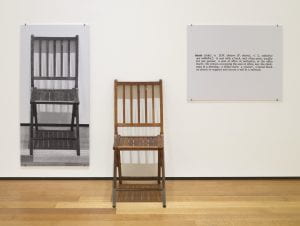The end of grade 11. We have just finished another year of high school. I can’t really believe it’s over and that summer is here already.
To finish off our year, we were tasked with yet another end of the year exhibition. And this one was like no other one we’ve done before.
Let me tell you all about it.
To start off this unit we took a trip to an art museum. The Vancouver Art Gallery, to be more specific. This was just an afternoon excursion, we were only there for no more than 2 hours. But those two hours were actually very helpful for me. We saw things like this, hanging from the ceiling:

We were expected to accept that it’s art, even though they suspiciously look like giant blue testicles. Art like this was all over the museum we were visiting, and I really saw how the visual element of the art did not have to be related to the idea that was behind it at all. This is the greatest impact left on me after going to the museum. And it really got me thinking.
The next part of the final project was to learn as much as we could about the Vietnam war. And to do this, our teachers prepared us with really deep, content-packed packages documenting different aspects of the war. The information was split up into themes, and was filled with questions, thinking prompts, and video. We would work through it for a full two weeks while our teachers were away, and when they got back, they tested our knowledge with a test. Half multiple choice, half open ended written questions. I definitely feel I could’ve tried to retain a bit more information, which then I could’ve used to deepen my understanding on my questions responses. But I was already thinking about my art piece.
We had to start with a thesis. I knew I wanted to focus on a certain ideal that I discovered while researching. It’s called “American Exceptionalism.” When I read about it, I was a little baffled because I didn’t know this was an actual thing. I knew Americans thought they were great but I mean, I didn’t know it was a full on accepted ideology. Now I just had to relate this to conceptual art.
- One and Three Chairs
- The Treachery Of Images
- Untitled (Perfect Lovers)
After looking at more examples of conceptual art like the ones above, I started getting ideas. At first, they were pretty bad. Boring and way too literal. I knew I really didn’t want my piece to be really literal, where people could figure it out on their own. I wanted them to be confused, and then blow their minds when I explained it. My ideas were getting better and better, but before I knew it, the exhibition was 3 days away. I planned on making a tape man, a life size soldier filled with fake American dollars and little green army men, symbolizing how the idea of American Exceptionalism was filled with billions of Americans dollars and thousands of Americans lives. But, then I walked into school on Monday and saw that Robert Gary Wharton had beaten me to the tape man idea.
So I just needed to represent American Exceptionalism another way. And then I struck gold. This is what I found:

And that’s what brought me to my final product, which is below:

The Explanation
Now I’m sure you’re probably wondering what the heck that wooden bow-tie looking thing has to do with the word hubris, and the Vietnam war of course. Well, let me enlighten you. The brown object on the pedestal are wings, and as a whole they represent American Exceptionalism (AE), the idea that America was the greatest country ever, with a duty to protect freedom anywhere on the globe. They are wings because of the second definition of hubris, relating to Greek mythology. They are the wings of Icarus, who was too confident in his wax wings and flew too close to the sun, just before plummeting to his death. The burn marks on the wings represent how the idea of AE was taking damage during the Vietnam war, since the guerrilla fighters were winning. The American money was patching those holes representing how the American government poured billions of dollars into the war just to keep the idea of AE “flying,” even when they knew they couldn’t win. The newspaper wrapped on the stand signify how the American government was twisting the truth on the war progress, telling the public that the war was going in their favour through media, when in reality, their idea of AE had flown too close to the sun. And lastly, the backpack straps and handles represent how this idea could be picked up and worn by anyone, and could result in dangerous consequences if not worn carefully.
Phew, that was a lot to take in.
This project started out not too exciting for me, but as it went on, I realized how much learning I had done. I learned way more about the Vietnam war than I had thought, through our research package and just my own curiosity. I also learned a lot about conceptual art, something I knew incredibly little about, but it opened my eyes to the minimal limits of art. It also taught me how to connect detailed and specific ideas I had based on creativity, understanding, and research. I’m really glad we did this unit and I was really proud of my final product.
Thats all,
see you


